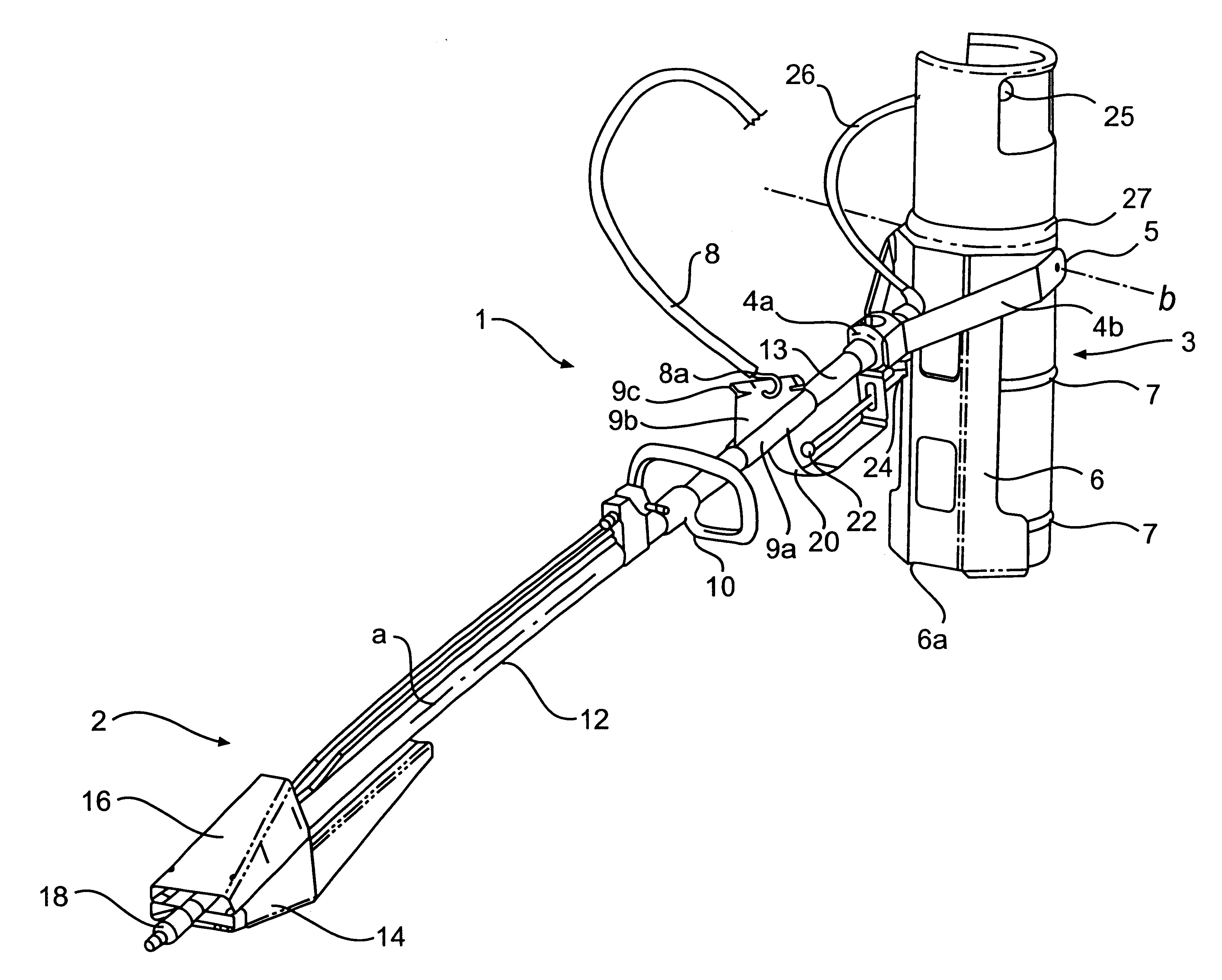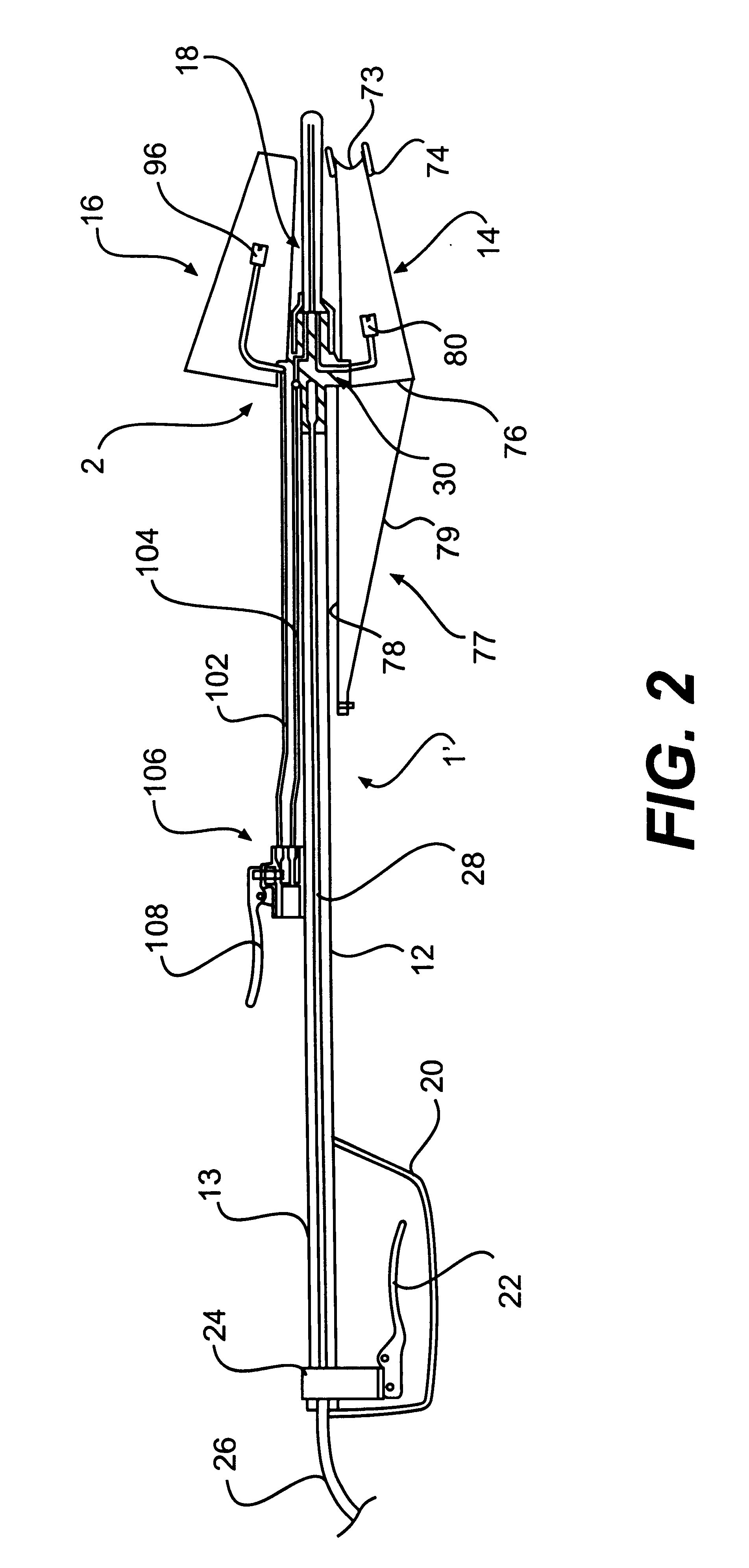Torches and burners for flame cultivation and flaming
a technology of flame burners and torch burners, which is applied in the direction of combustion types, ways, weed killers, etc., can solve the problems of heavy duty, large weight of torch burner heads, and limit as to possible cylinder sizes
- Summary
- Abstract
- Description
- Claims
- Application Information
AI Technical Summary
Problems solved by technology
Method used
Image
Examples
Embodiment Construction
Referring to the drawings, first to FIGS. 1 and 2, there is illustrated two variants of a hand-held, flaming torch 1 and 1' which use LPG as fuel source and which can be used in numerous applications, such as for flame cultivation of terrain that is inaccessible to larger, tractor-carried flame cultivator torch batteries, weeding of irrigation channels, burning of tree stumps, softening of bitumen surfaces for road works, spot back burning operations during forest fires and other applications which require localised application of a flame or high heat.
Torch 1 of FIG. 1 has two main structures, a torch head generally indicated at 2 and a fuel tank mounting structure, generally indicated at 3, whereas torch 1' of FIG. 2 lacks the fuel tank mounting structure, as the fuel supply cylinder for torch 1' is to be carried separately from the torch, either using a customised back pack or a non-motorised cart (not shown) as is known in the art.
PUM
 Login to View More
Login to View More Abstract
Description
Claims
Application Information
 Login to View More
Login to View More - R&D
- Intellectual Property
- Life Sciences
- Materials
- Tech Scout
- Unparalleled Data Quality
- Higher Quality Content
- 60% Fewer Hallucinations
Browse by: Latest US Patents, China's latest patents, Technical Efficacy Thesaurus, Application Domain, Technology Topic, Popular Technical Reports.
© 2025 PatSnap. All rights reserved.Legal|Privacy policy|Modern Slavery Act Transparency Statement|Sitemap|About US| Contact US: help@patsnap.com



